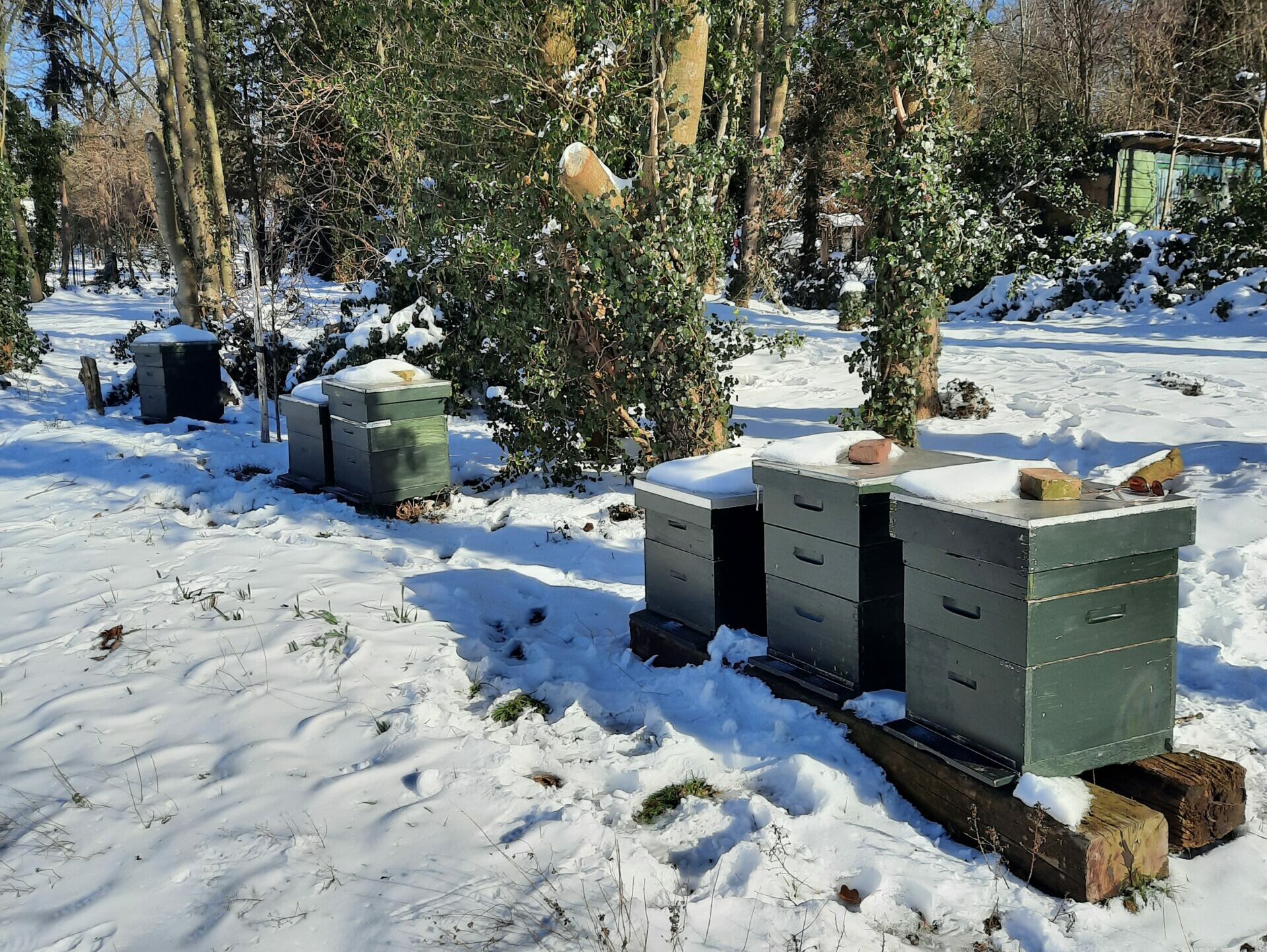Productivity and health of bee colonies are strongly determined by forage and pathogens and parasites. We can influence this by measures such as travelling to forage areas and control, especially of the varroa mite. In addition, selection is a way to influence these characteristics. Furthermore, selection can produce more gentle and less swarming colonies.
Selection has been taking place in honey bees for a long time. Over the years, landraces with good characteristics for beekeepers have been developed and Brother Adam started improving honey bees through crossbreeding and selection at Buckfast Abbey almost a century ago.
Pim Brascamp and a number of colleagues have written a series of articles in Bee World about the design of selection programs. The approach was mainly practical: what do you want to achieve, what does it involve and how do you organise it? But behind the answers to these questions there is theory, especially about selection on characteristics that are influenced by many genes, which is usually the case.
Based on these articles, an e-book has now been published: ‘Genetics of selection in honeybees’. This discusses the theory behind the selection programmes. The aim of the authors is to reach an audience of breeders and scientists to inform them further about the backgrounds of selection programmes, and especially about the quantitative aspects of genetics.
The theory behind selection is a scientific field with a lot of mathematics. That is why many people find it complicated. This book presents that theory in an accessible way, of course mainly focused on the honeybee. In that it fills a gap: there are many books about the practice, but it is more difficult to find information about the underlying theory.
In fact, the matters discussed in this book can also be found in general theory books and in scientific literature. But that knowledge is focused here on the honeybee with all its peculiarities, such as the fertilisation of queens in the air by many drones and the fact that you do not measure characteristics on one individual, but on a colony.
The authors place great emphasis on the role of chance, namely the fact that the eggs laid by a queen can differ greatly in terms of the characteristics that are passed on to offspring via that egg. This is because a random half of the genetic make-up is passed on. In practice, this large genetic variation is often underestimated, while you should definitely take it into account in a selection program.
This book is primarily intended as background information for setting up a selection programme. It contains guidelines on how to determine how important you find different characteristics, how many colonies you need to have in order to be able to select successfully, and how to distinguish between heredity and environment when assessing characteristics. On his own, a beekeeper with only a few colonies usually cannot do much about that. The book therefore focuses on collaboration between beekeepers, breeding groups, and in particular on breeders with a coordinating and organising role.
The book consists of 5 chapters, including the introduction. Chapter 2 is about the breeding goal: which characteristics are important for selection? The difference between breeding goals and selection criteria is also discussed. Breeding goals are about the characteristics that one would like to change through selection, selection criteria are about the observed characteristics on the basis of which we can select the better colonies. In addition, suggestions are made to sharpen these breeding goals, for example by organising surveys among end users.
This chapter introduces Beebreed, the service that estimates breeding values of colonies that have been tested by breeders. It explains how these breeding values are calculated. It is important to realise that when assessing colonies, most characteristics are influenced by both the genetic properties of the queen and those of the workers.
Chapter 3 deals with quantitative aspects of genetics, the theory behind traits that are influenced by many genes. Hence the word quantitative. Concepts such as heritability, repeatability, inbreeding and effect of selection are discussed here. The authors explain why it is so difficult to detect improvements from one generation to the next and why a new generation of very good parents is genetically no better after all. The challenge is to separate genetic influence and environment when assessing the performance of colonies. To make it even more complicated, there is also interaction between genotype and environment. This is visible, for example, in the fact that locally adapted colonies do better in their original environment than in other places.
The speed at which improvement is achieved is important for breeders. This is influenced by two variables: the degree of genetic improvement between two generations and the generation interval. Breeders try to influence both variables.
Chapter 4 goes into more detail about calculating breeding values. You can compare colonies on their properties, but you actually want to look deeper: at the genetic make-up. And more specifically at the passing on of it to the next generation: the breeding value. When estimating breeding values, it is important to distinguish between differences within and differences between apiaries.
Finally, Chapter 5 is about selection programmes. Here, factors are discussed that determine the degree of genetic progress and the considerations that must be made in this regard. The chapter ends with a number of examples from the scientific literature, in which various aspects of optimismeing selection programs are discussed.
This important and useful publication is freely available on the Internet!
Genetics of selection in honeybees (2024). Pim Brascamp, Aleksandar Uzunov, Piter Bijma and Manuel Du.
https://edepot.wur.nl/675067.
